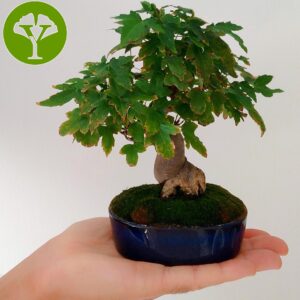Each tree is born and grows in nature in a specific natural environment (landscape). Let’s take a Larch or Scots pine bonsai: both are trees that naturally grow in the high mountains, they will not particularly fear the winter cold… indeed it is essential for their growth. In this case, we should not be afraid to leave our bonsai out of the house during the winter, as well as in the other seasons. This actually applies to the vast majority of bonsai.
However there are exceptions: think of a tropical plant, such as a ficus for example, used to thrive in latitudes much lower than ours, where temperatures may never drop to 15-20 degrees. It is therefore intuitive to think that placing a ficus outside during the winter months in Europe will subject the plant to a high risk of not exceeding the season. During winters like in Europe, these plants of tropical or sub-tropical origin can be protected inside the home placed near a window, so as to allow them to receive the right amount of light.
When we choose the location of a bonsai, in addition to thinking about the species we are cultivating and its origins in nature, we must also think that the plant suffers from heat and cold more or less as we do. Are we comfortable under the scorching August sun at one in the afternoon? Are we comfortable exposed to a cold wind on a freezing January night? We do not believe … It will always be advisable to avoid stress to our bonsai from too high or too low temperatures.
As an absolutely general and indicative suggestion, for tree species that naturally live at Southern European latitude we take into account that the temperature inside the pot must always remain, throughout the year, between -4 and 30 Celsius degrees. For tropical species, such as ficus, we consider between 12 and 30 degrees.
The reason of these range is because of the cultivation in pots. The vessel, in fact, no matter how large it is, will inevitably be more exposed to the external temperature range. A root that grows covered by three meters of earth will be more protected than another that grows in a pot a few cm thick.
In conclusion: for the species that tolerate our climate (refers to southern Europe climate), in summer we will take care to place the bonsai outside in a shady position, especially during the hottest hours of the day, while in winter we will place it outside in the sun protecting the pot when the temperature is too cold (e.g. wrapping it with non-woven fabric or temporarily taking it to a cold greenhouse). For species that cannot stand our climate, from early autumn to late spring we will keep our bonsai indoors, while in summer we will keep it outside, however, protected from direct sunlight.
Was this article good for you? You can leave a comment or ask a question (Posting will be subject to approval)

